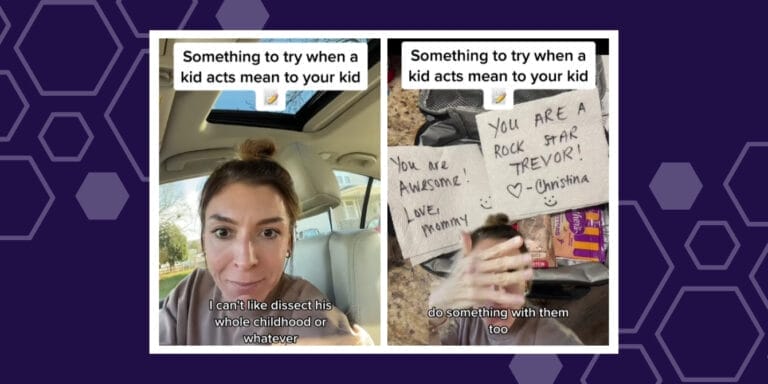Sometimes 2-year-olds just need hugs

I will hug her because my heart tells me it's the right thing to do.
My 2-year-old has a lot of big feelings on a daily basis. I mean, obviously, right? I’m 32 and I still have a lot of big feelings on a daily basis, too. But the difference is, I have had three decades worth of time to sort through these emotions; to figure out what triggers certain feelings and to decide what to prescribe myself in order to feel better.
When I’ve had a rough day filled with deadlines and dishes, I can prescribe myself a night filled with popcorn, Netflix and my couch—and I know it’ll help me relax and unwind.
But when my kiddo has had a rough day, she doesn’t always know what she’ll need to make herself feel better. She’s two and she’s learning.
When I’ve been up all night with her teething baby sister and feel tired before my eyes are even open the next morning, I know that texting a friend to commiserate with will help ease the pain of exhaustion.
But when my kiddo is exhausted, she doesn’t always know what she’ll need to make herself feel better. She’s two and she’s growing.
When I feel overwhelmed and I’m doubting myself, I know that my husband’s helping hands and a pep talk when he gets home will help me feel safe and loved.
But when my kiddo feels overwhelmed, she doesn’t always know what she’ll need to make herself feel better. She’s two and she’s making connections.
She looks to me to help her figure these things out. Because if I left things up to her, the answer to any of these issues would be a Go Diego Go binge-fest on the couch with no clothes on and lots of ice cream. So, instead, I guide her.
And I have a pretty decent toolkit of strategies to help when my toddler is melting down. If she’s upset, we usually talk about why she’s upset or we take a few deep breaths and sing a Daniel Tiger song. (Not gonna lie, sometimes a cookie or doughnut is involved, too.)
If she’s exhausted, I try to settle her down for a nap or get her to bed a bit earlier. If she’s overwhelmed, I usually try to have us pause and see what we can do to eliminate some of her anxious feelings. That might mean leaving the park if it’s overcrowded or turning the music down if it’s too much.
But what I have been noticing recently with my spirited, strong-willed, second born 2-year-old is that sometimes the answer to her “problems” is simple.
Sometimes what she needs is a hug.
A huge, ginormous hug from her mama. One filled with love and concern and hope and safety and encouragement.
And sometimes I feel like, to other people, it might look like I jump too quickly to physical affection to help calm my toddler. But when I feel her tense body slump right into mine after I scoop her up in a hug when she’s melting down—that’s all the proof I need to know I am doing the right thing for us.
But when I doubt my loving approach, I have science and professionals to back up my instincts.
Dr. Deborah McNamara says, “We need to take the lead to keep our kids close, to show them affection as appropriate, to pay attention to them and to provide an invitation for relationship that is unconditional.” And according to Child Trends, “Science supports the idea that warmth and affection expressed by parents to their children results in life-long positive outcomes for those children.” Like improvements in many areas: self-esteem, parent-child communication and academic performance.
So when my toddler is frustrated because it isn’t fair…I will hug her.
When my toddler is spiraling because it is all too much…I will hug her.
When my toddler is crying because she stubbed her toe…I will hug her.
When my toddler is yelling because she wants that toy!…I will hug her.
When my toddler is making demands about these shoes, NOT those!…I will hug her.
When my toddler is crying because her nap was too short…I will hug her.
When my toddler is anxious and unsure…I will hug her.
I will hug her because science tells me it helps both of us feel happier. I will hug her because professionals tell me it will foster a deeper connection between us. And I will hug her because my heart tells me it’s the right thing to do.
Hugs (paired with other strategies like teaching her specific ways to calm down or modeling respect and kindness) have always been part of my toolkit—it’s a natural response for me when something is bothering any of my three kids.
But my middle baby—my 2-year-old—seems to crave extra affection from me. Maybe it’s her age or maybe it’s her personality, I’m not sure. But either way, there is a noticeable difference in how quickly she can calm down based on how quickly I can give her a big squeeze. So I’m going to keep up my PDAs—prescriptive displays of affection—in the form of tender, loving mama hugs for as long as I can; as long as it works for us; and as long as she lets me.


































